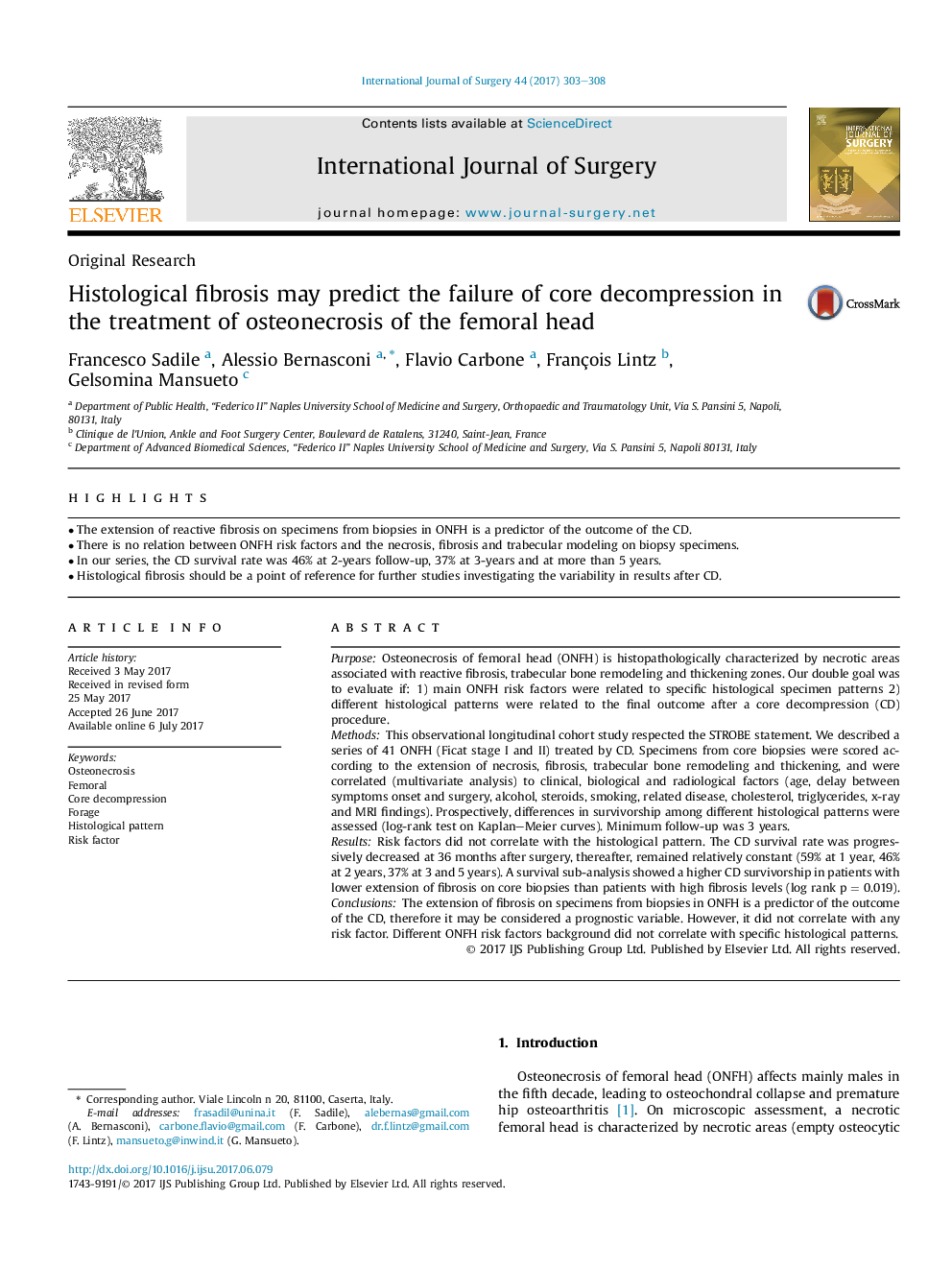| کد مقاله | کد نشریه | سال انتشار | مقاله انگلیسی | نسخه تمام متن |
|---|---|---|---|---|
| 5731684 | 1611934 | 2017 | 6 صفحه PDF | دانلود رایگان |
- The extension of reactive fibrosis on specimens from biopsies in ONFH is a predictor of the outcome of the CD.
- There is no relation between ONFH risk factors and the necrosis, fibrosis and trabecular modeling on biopsy specimens.
- In our series, the CD survival rate was 46% at 2-years follow-up, 37% at 3-years and at more than 5 years.
- Histological fibrosis should be a point of reference for further studies investigating the variability in results after CD.
PurposeOsteonecrosis of femoral head (ONFH) is histopathologically characterized by necrotic areas associated with reactive fibrosis, trabecular bone remodeling and thickening zones. Our double goal was to evaluate if: 1) main ONFH risk factors were related to specific histological specimen patterns 2) different histological patterns were related to the final outcome after a core decompression (CD) procedure.MethodsThis observational longitudinal cohort study respected the STROBE statement. We described a series of 41 ONFH (Ficat stage I and II) treated by CD. Specimens from core biopsies were scored according to the extension of necrosis, fibrosis, trabecular bone remodeling and thickening, and were correlated (multivariate analysis) to clinical, biological and radiological factors (age, delay between symptoms onset and surgery, alcohol, steroids, smoking, related disease, cholesterol, triglycerides, x-ray and MRI findings). Prospectively, differences in survivorship among different histological patterns were assessed (log-rank test on Kaplan-Meier curves). Minimum follow-up was 3 years.ResultsRisk factors did not correlate with the histological pattern. The CD survival rate was progressively decreased at 36 months after surgery, thereafter, remained relatively constant (59% at 1 year, 46% at 2 years, 37% at 3 and 5 years). A survival sub-analysis showed a higher CD survivorship in patients with lower extension of fibrosis on core biopsies than patients with high fibrosis levels (log rank p = 0.019).ConclusionsThe extension of fibrosis on specimens from biopsies in ONFH is a predictor of the outcome of the CD, therefore it may be considered a prognostic variable. However, it did not correlate with any risk factor. Different ONFH risk factors background did not correlate with specific histological patterns.
Journal: International Journal of Surgery - Volume 44, August 2017, Pages 303-308
